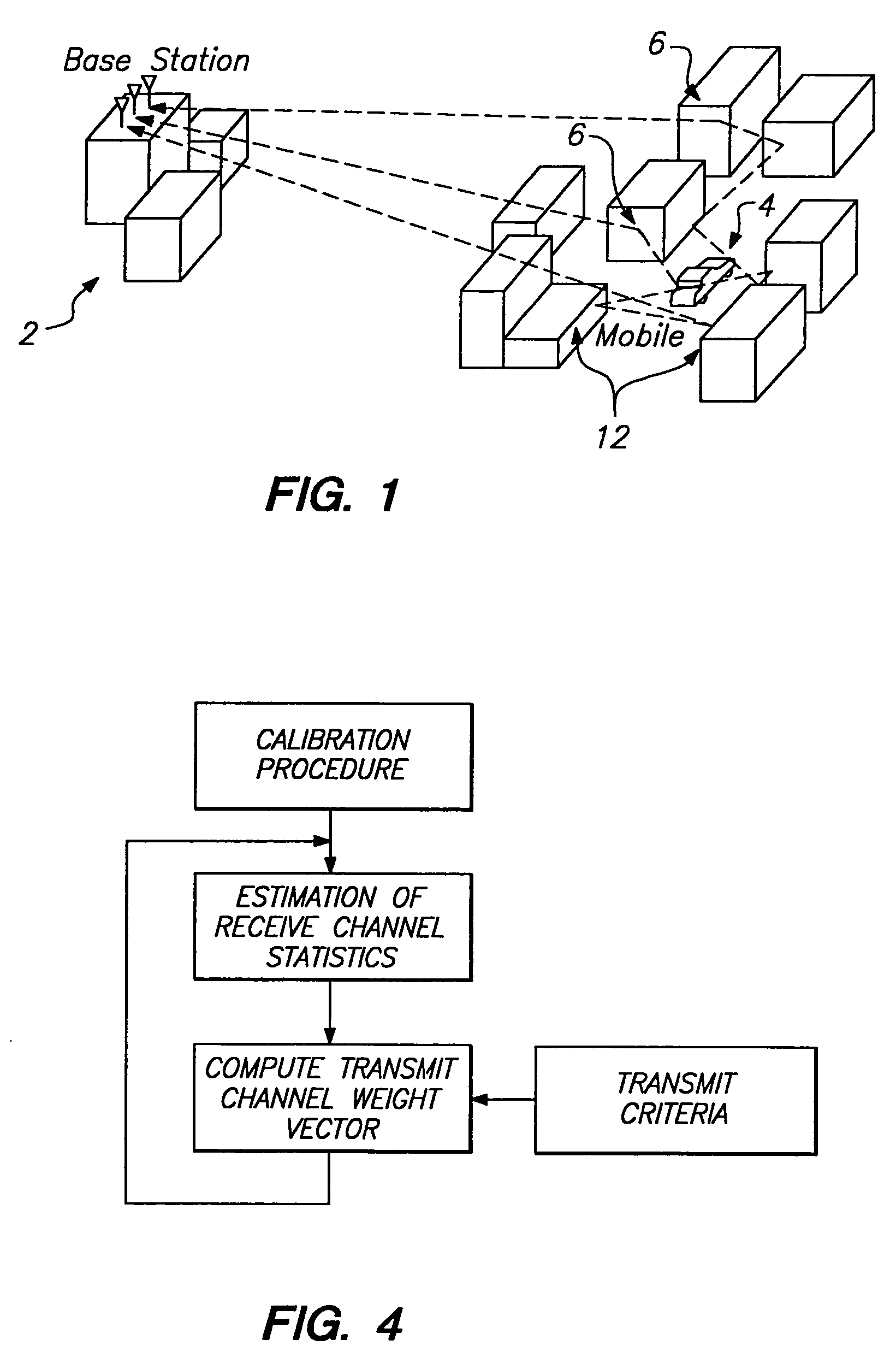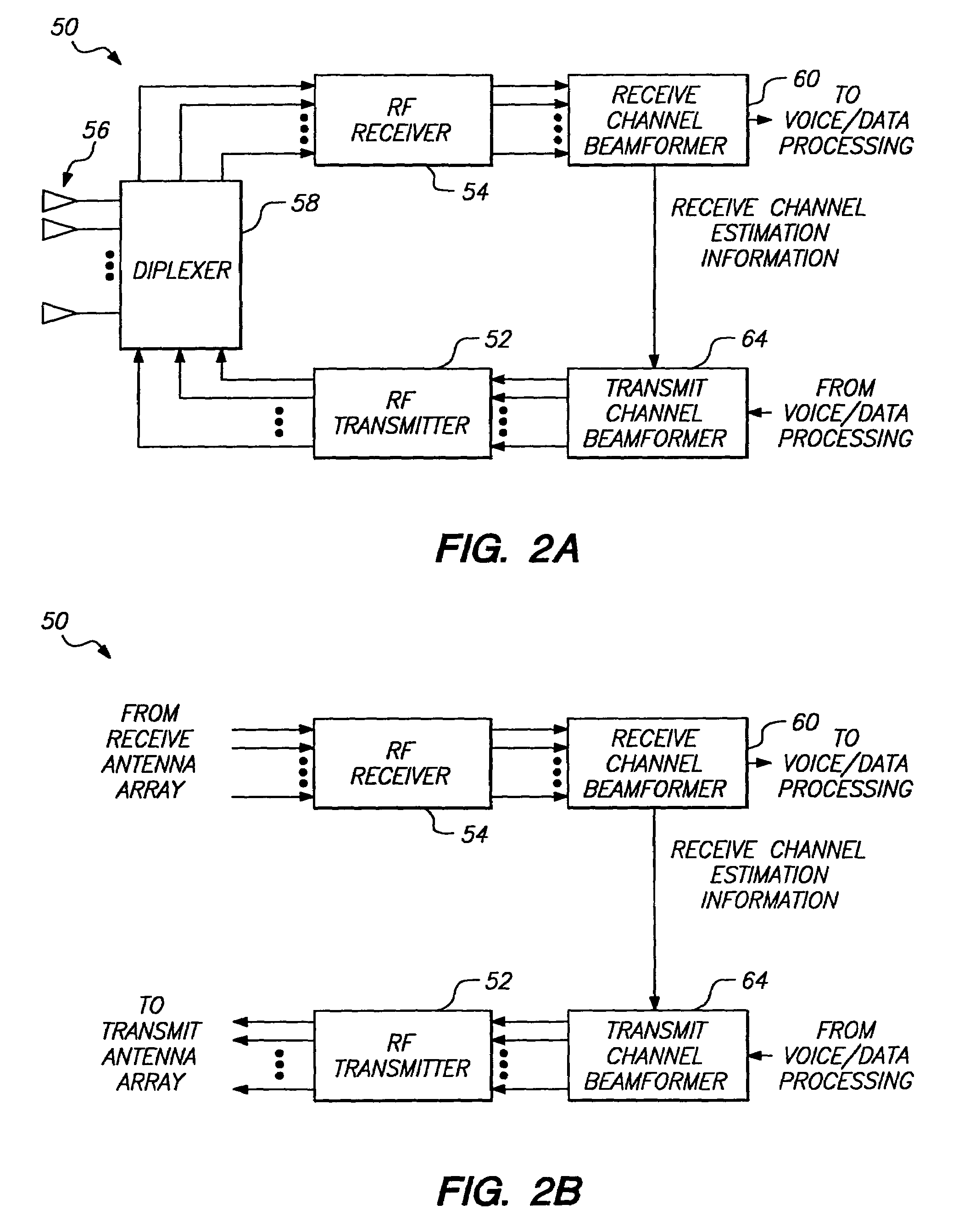Method and apparatus for adaptive transmission beam forming in a wireless communication system
a wireless communication system and transmission beam technology, applied in the field of antenna beam pattern formation, can solve the problems of reducing the effective time average gain of the antenna, reducing the energy radiated along some angular paths, and not directly applying the techniques of improving the reception of line-of-sight radio systems in multipath signal environments, so as to improve the quality of the received signal of the remote user.
- Summary
- Abstract
- Description
- Claims
- Application Information
AI Technical Summary
Benefits of technology
Problems solved by technology
Method used
Image
Examples
Embodiment Construction
[0033]I. Overview of Beamforming Network
[0034]Turning now to FIG. 2A, a block diagram is shown of the physical organization of a beamforming network 50 configured to perform adaptive beam forming in accordance with the present invention. In an exemplary embodiment the beamforming network 50 is disposed within a base station of a cellular communications network, in which is included a transceiver comprised of a radio frequency (RF) transmitter 52 and an RF receiver 54.
[0035]In the embodiment of FIG. 2A, a base station antenna array 56 serves to produce independent transmit and receive antenna beams for facilitating communication with one or more mobile units (not shown). The term “receive channel vector” is employed to indicate that each antenna element within the base station antenna array 56 will form a propagation channel to a given remote user. The composite array channel may be represented as a vector having elements corresponding to each individual antenna channel. As is descri...
PUM
 Login to View More
Login to View More Abstract
Description
Claims
Application Information
 Login to View More
Login to View More - R&D
- Intellectual Property
- Life Sciences
- Materials
- Tech Scout
- Unparalleled Data Quality
- Higher Quality Content
- 60% Fewer Hallucinations
Browse by: Latest US Patents, China's latest patents, Technical Efficacy Thesaurus, Application Domain, Technology Topic, Popular Technical Reports.
© 2025 PatSnap. All rights reserved.Legal|Privacy policy|Modern Slavery Act Transparency Statement|Sitemap|About US| Contact US: help@patsnap.com



